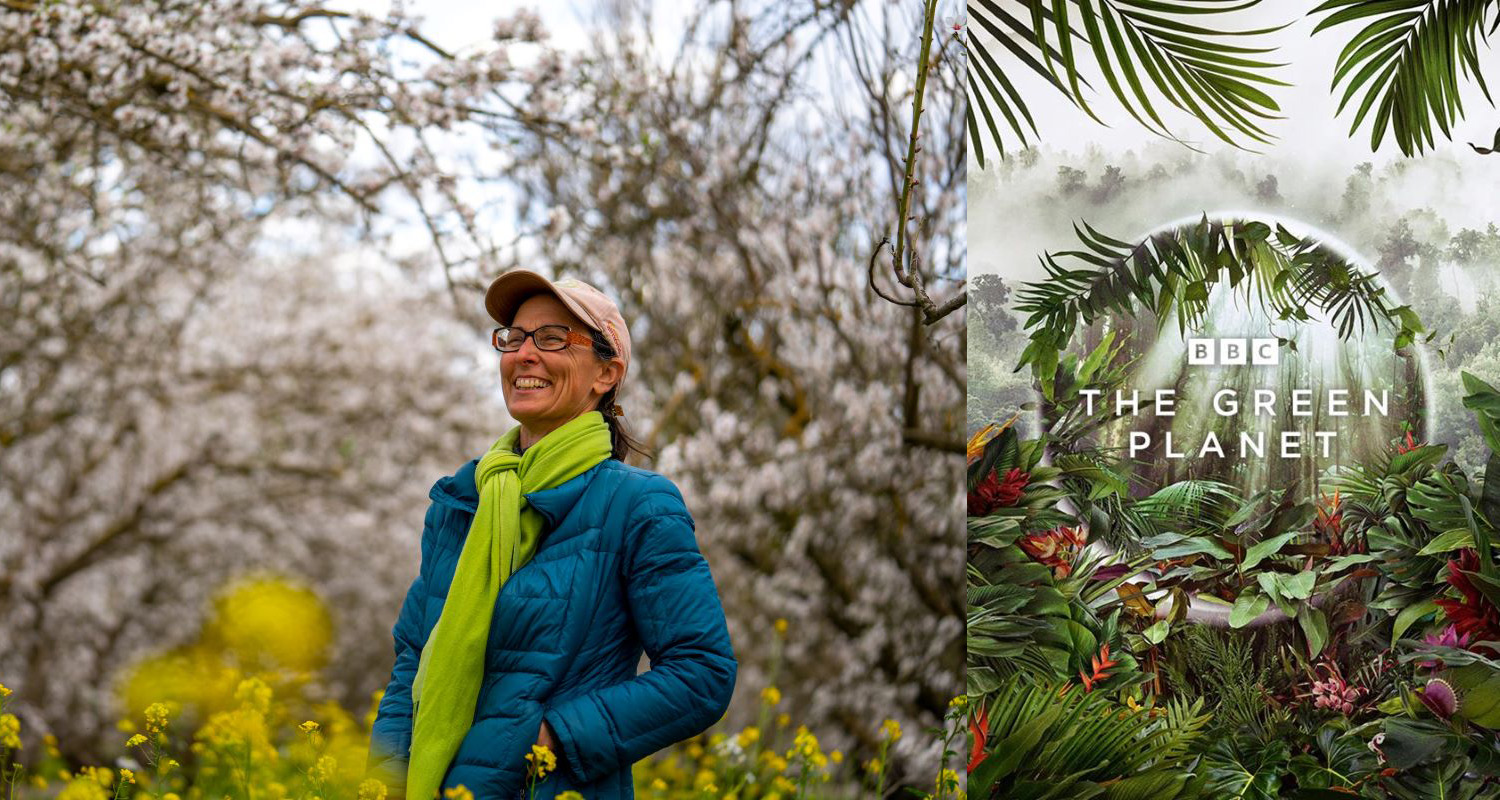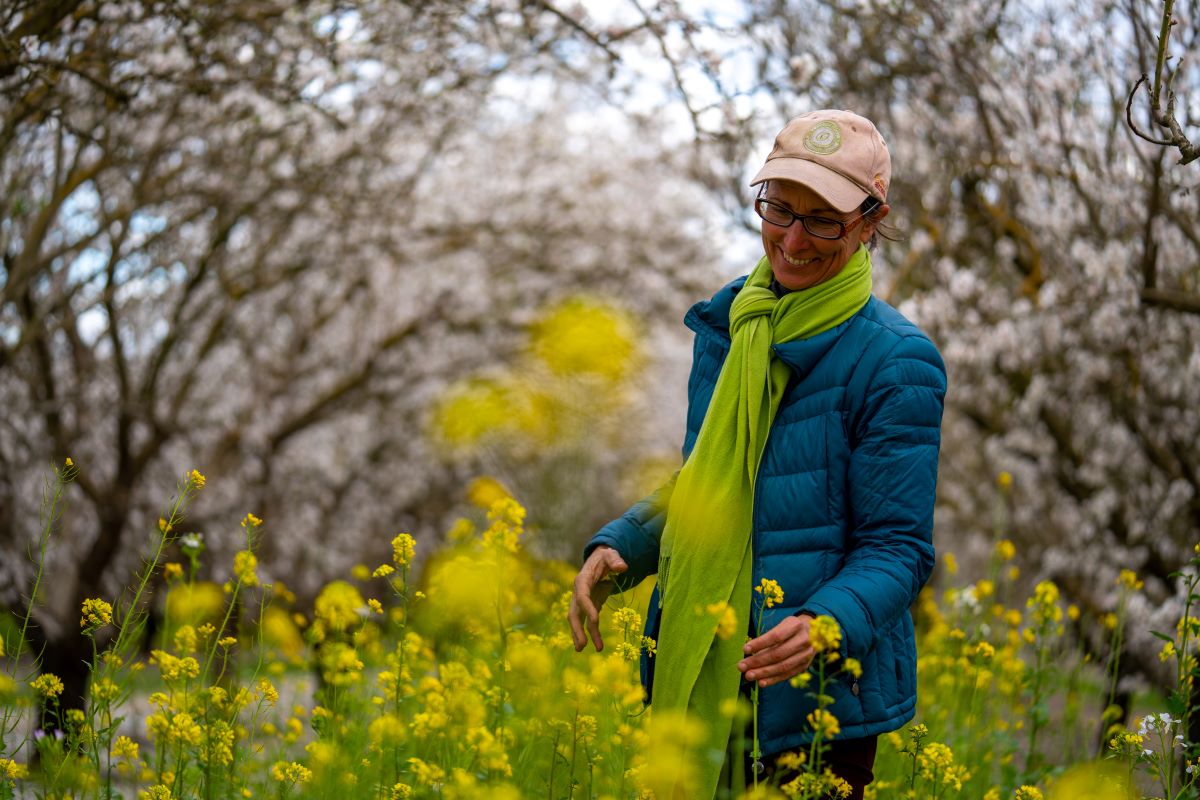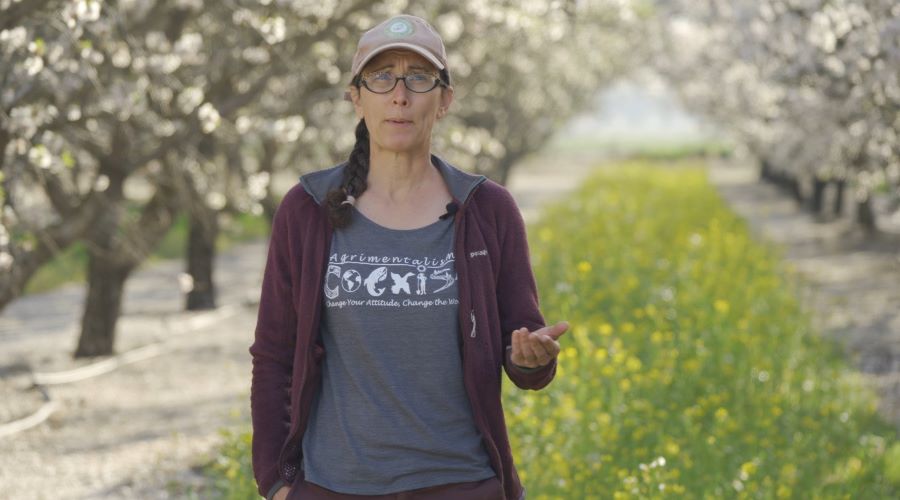“The Green Planet” is a five-part, critically acclaimed documentary and part of the BBC Earth series. It looks at what narrator Sir David Attenborough calls the strange and wonderful world of plants. The production took the BBC Studios Natural History Unit three years to complete and was filmed in 27 countries. The fifth and final episode, Human Worlds, aired on August 6, 2022.
As part of that ambitious project, a three-person crew – two photographers and a producer/director – spent three weeks in California almond country in 2020. They visited the orchards and homes of Christine Gemperle, Brian Wahlbrink, Danielle Veenstra and Kiku Severson to film the wonder of bloom and pollination and to capture the character of almond orchards. These farms feature in the final episode of the series, airing on Wednesday, August 3.
When the Green Planet production crew first connected with second-generation farmer Christine Gemperle, they immediately fell for the beauty of her orchards during a spectacular bloom.
“2020 was the year of the Mega Bloom, with everything blooming close together,” Christine said. “There were so many blossoms on the trees, my cover crops looked awesome, and everything was visually perfect for their shots.”
The crew said the visuals came out even more spectacular than they expected. And they found something else they didn’t expect – Christine and her genuine, relatable way of describing her world.
“They said it was going to be about the plants and the bees, and that the farmer wouldn’t be part of the story,” she said. “They were really nice about it. But toward they end they decided to interview me anyways in case they could use it for supplementary material, like an online bonus video.’”
They must have liked what they heard because, in the end, Christine is a prominent feature in the episode. During her segment, Christine brings to life an idea described by series host David Attenborough - “bringing a bit of wildness back.” Christine is one of many almond farmers who are growing blooming cover crops between their orchard tree rows to support honey bee health and provide habitat for pollinators. According to Christine, cover crops and pollinator habitat support “a better, more stable system.”



